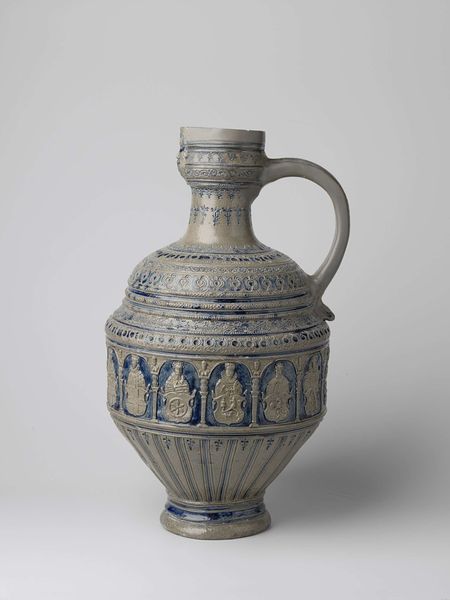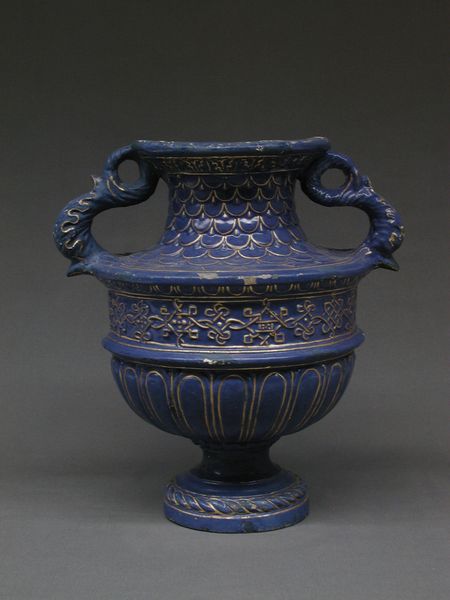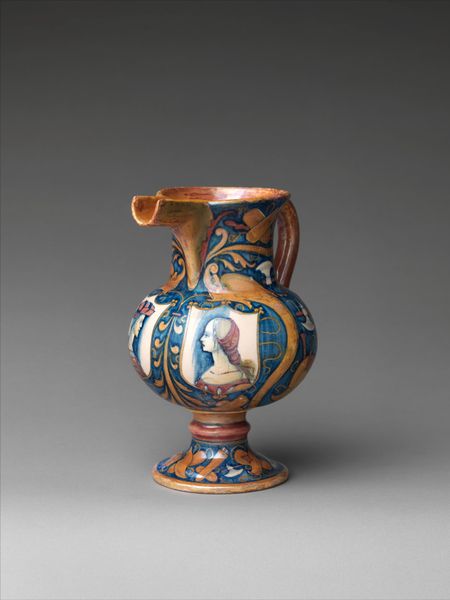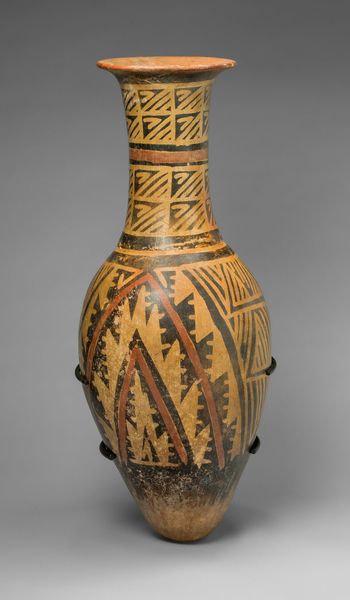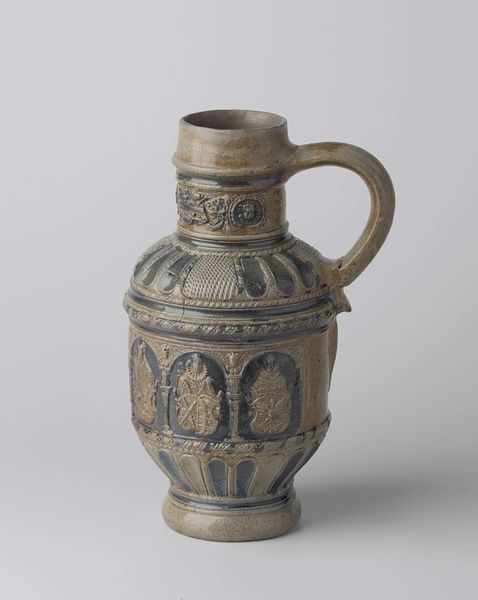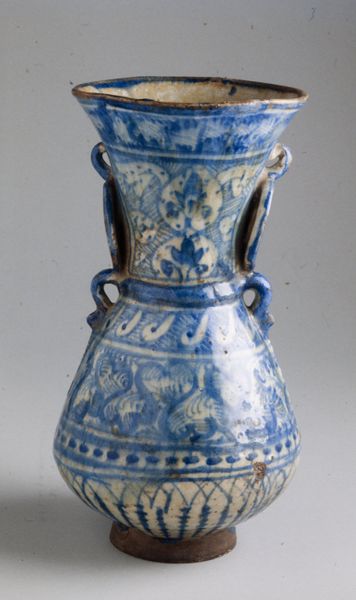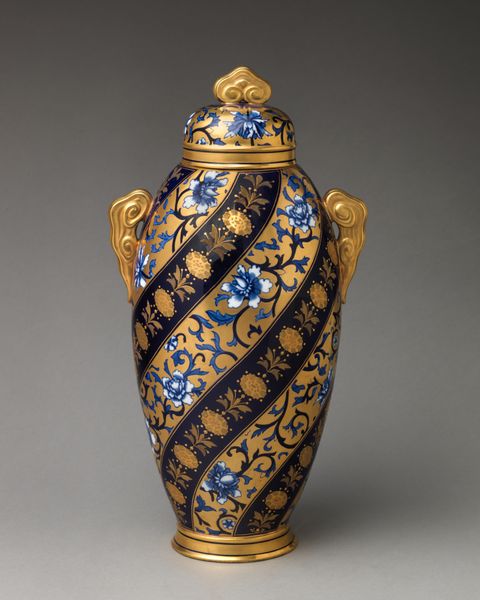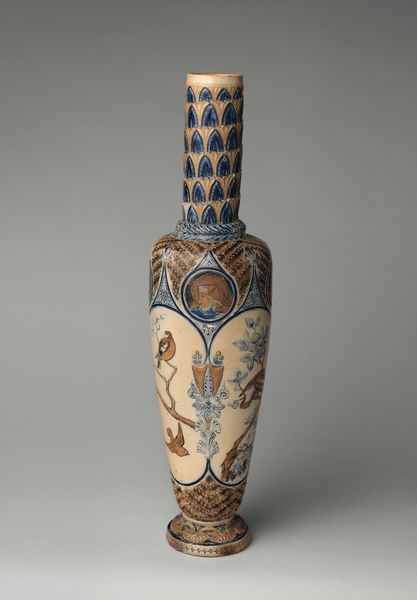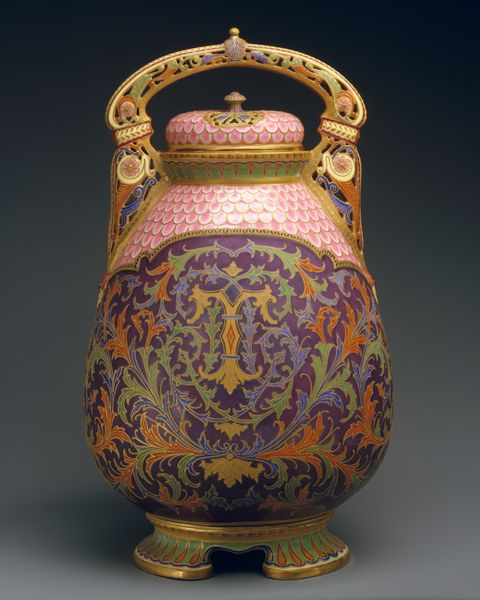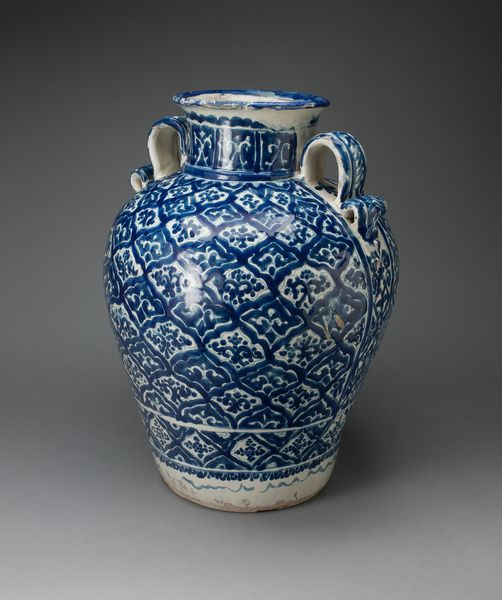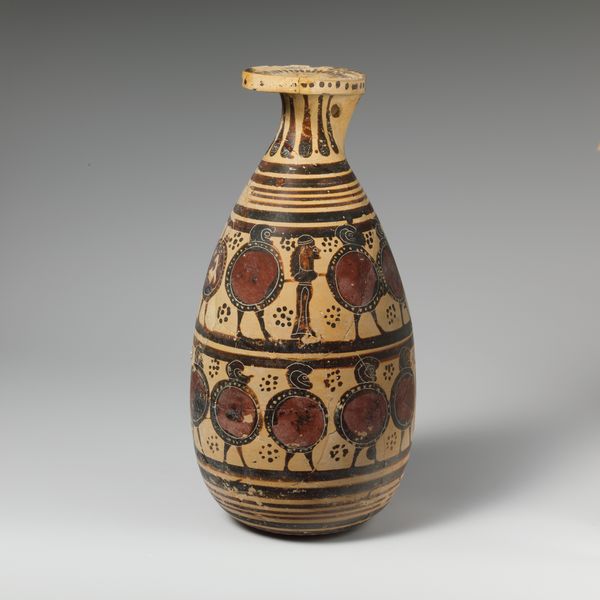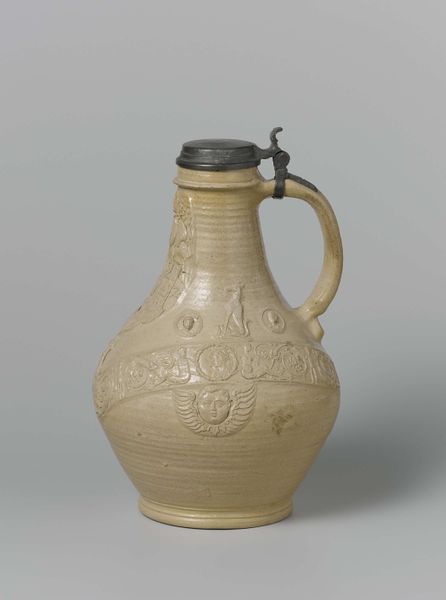
ceramic, sculpture
#
ceramic
#
sculpture
#
ceramic
#
decorative-art
Dimensions: Overall (confirmed): 19 1/2 × 8 3/16 × 8 1/16 in. (49.5 × 20.8 × 20.5 cm)
Copyright: Public Domain
Curator: What strikes me most about this ceramic vase, created in 1879, is its overt ambition. It resides here, at the Metropolitan Museum of Art. Editor: I'm drawn to the ornamentation—it feels heavy, burdened even, by layers of floral and geometric motifs. Curator: The ceramic material certainly lends itself to the meticulous detail. We should consider that making a piece such as this involved highly skilled labor, where specialization was everything. The cost of ceramic during this time places production like this within reach of specific demographics, those who had access to materials. Editor: I see this elaborate surface design not merely as decorative excess, but possibly reflecting anxieties surrounding rapidly shifting class structures in the late 19th century. Curator: Anxieties or aspirations? Or perhaps even the complex, layered glaze serves as a visual metaphor for societal complexity during industrialization, which is also rapidly developing throughout the West at the time? Editor: Precisely! Consider, too, the vase form itself and how it invokes historical notions of classical elegance, all the while being reinterpreted through a Victorian lens and mass culture and emerging design philosophies. It highlights cross-cultural references. Curator: Yes! What this object allows is not just seeing how artists could shape the very material itself but to understand the social forces—both literal and conceptual—that are informing design during the period, like material availability, or access to tools and techniques, and those with knowledge on hand. Editor: And maybe understanding how something utilitarian transforms under the pressure of aesthetic movements and evolving class dynamics can help us examine value judgments, which persist in today's market. It reveals subtle assumptions within what constitutes a “high art object” compared to design, folk art, or even craft. Curator: I think it is quite impressive how so much labor has translated into the details across the surface, making the process evident. The symmetry of the vase with its applied decorative flourishes offers an invitation to engage with both a practical object elevated to art, and to learn about an entire community's output through materiality. Editor: Right! By understanding an object’s construction and reception, and being attuned to the culture around the artwork, that might guide us to reconsider art’s perceived purpose in society today, whether for pure contemplation, activism, commerce, or, all three.
Comments
No comments
Be the first to comment and join the conversation on the ultimate creative platform.
